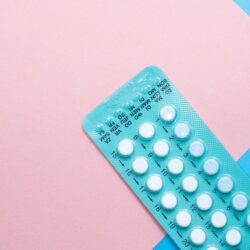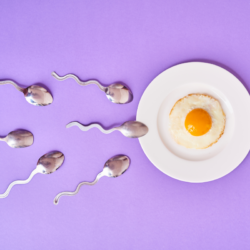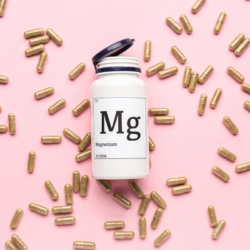28 March 2024 marks World Endometriosis Day, a misunderstood and often taboo disease. Millions of women and men around the world are coming together to raise awareness of this disease, which affects 10-20% of women of childbearing age. The aim of this day is to mobilise governments, doctors and specialists to do more to combat endometriosis. Join the movement to help advance research and improve care for this disease.
What is endometriosis?
First described by the Austrian doctor Karel Rokitansky in 1860, endometriosis is a little-known and poorly understood disease. It is a chronic disease that affects 10-20% of women of childbearing age and can be a source of infertility in the long term. It takes the form of a tissue similar to the endometrium, the mucous membrane lining the uterine cavity. It acts like the endometrium, except that it is outside the uterus. In other words, endometriosis collects and disintegrates like the endometrium, if there is no fertilisation, and bleeds, simulating menstruation. So, like menstruation, episodes occur every month. Nonetheless, they cause unbearable pain (as with painful periods, if not more intense) which may worsen over time.
Generally speaking, endometriosis is located in the peritoneal cavity and in the ovaries. That said, as it is an ectopic tissue, it can be found in other areas of the body such as the bladder, rectum, kidneys or diaphragm. It can also be found in the lungs, soft tissues, brain and bones, but these situations are very rare.
How can you tell if you have endometriosis?
The symptoms of endometriosis can vary considerably from person to person, but some common signs may include intense pelvic pain, severe menstrual cramps, pain during sexual intercourse and heavy or irregular menstrual bleeding. If you experience any of these symptoms, it is important to consult your doctor for a precise diagnosis. A pelvic examination, ultrasound scan or other tests may be necessary to confirm the presence of endometriosis. The earlier endometriosis is diagnosed, the more likely it is that treatment will be effective in relieving symptoms and preventing complications.
Endometriosis: A reality for almost 190 million women
Endometriosis is a gynaecological condition that has a significant impact on the lives of millions of women around the world. According to the latest estimates from the World Health Organisation (WHO), around 10% of women of childbearing age are affected by this disease, or almost 190 million women worldwide.
Onset and duration of endometriosis
Endometriosis can appear as soon as the first menstrual period and continue to affect women’s lives until the menopause. Endometriosis is therefore not just a concern for women in their thirties; it also affects teenage girls, underlining the importance of early awareness and diagnosis.
Impact of the menopause on endometriosis
Although the symptoms of endometriosis tend to diminish after the menopause, they do not always disappear completely. This indicates that the hormonal changes associated with the menopause can influence the development and progression of this condition.
Symptoms of endometriosis
The symptoms experienced when the disease manifests itself are very diverse. The best-known signs are as follows:
- Abdominal and pelvic pain, worse at the time of menstruation
- Pain during sexual intercourse
- Pain when urinating
- Strong, unpleasant sensations when passing faeces
- Chronic fatigue affecting psychological well-being
Can endometriosis be treated?
Today, it is still difficult to detect endometriosis. In fact, it is sometimes asymptomatic or is simply treated as a “normal” painful period. This is why, unfortunately, the majority of proven cases are diagnosed late.
What’s more, there is still no treatment as such for endometriosis. However, hormone therapy and surgery are alternatives prescribed by specialists. A number of natural treatments are also available to relieve the symptoms of endometriosis. Hormone therapy aims to block the production of female hormones, while surgery aims to remove the lesions. Professionals around the world are continuing to conduct research into effective ways of combating endometriosis. Some have developed products such as Prescription Nature Endomet and TAIDO Endometra Endometriosis. These are not treatments, of course. However, they do help to protect the cells of the uterine lining and reduce fatigue by ensuring that the immune system functions properly.
Natural treatments for endometriosis
Endometriosis, a chronic and painful condition, is attracting growing interest in natural treatments. These offer promising alternatives to conventional therapies, which often focus on hormonal and surgical management of the disease.
Polyphenols: Resveratrol and EGCG
Polyphenols, in particular resveratrol and epigallocatechin-3-gallate (EGCG), have recently gained in interest in the context of endometriosis research. These natural compounds, present in certain foods and drinks, have shown promising properties in the treatment of this complex disease.
Resveratrol, a polyphenol found mainly in the skin of red grapes, has been the subject of several studies for its beneficial effects on health, particularly in modulating inflammatory and oxidative processes. In the context of endometriosis, resveratrol has been shown to inhibit the growth of endometriotic lesions. This inhibition is partly attributed to its ability to modulate inflammatory pathways and reduce oxidative stress within endometriotic tissues.
EGCG, the main polyphenol in green tea, has also been studied for its anti-inflammatory and antioxidant properties. In the context of endometriosis, EGCG has shown significant efficacy in reducing the size and number of endometriotic lesions in experimental models. These effects are thought to be due to its ability to inhibit cell proliferation and induce apoptosis (programmed cell death) in endometriotic cells.
Studies on mouse models and cultures of human endometrial epithelial cells have revealed that both resveratrol and EGCG can effectively slow the development of endometriosis. This discovery opens the way to new therapeutic strategies based on the use of these natural compounds. It is important to stress that these studies are still at a preliminary stage and that further research is needed to confirm these results and to assess the efficacy and safety of these compounds in patients with endometriosis.
Traditional medicine and medicinal plants
The use of medicinal plants, known for their anti-inflammatory and analgesic properties, is also popular in the treatment of endometriosis. A systematic review of clinical and experimental data highlights the potential of these natural remedies, particularly in reducing the inflammation and pain associated with endometriosis. (5)
N-Acetylcysteine (NAC)
N-acetylcysteine (NAC), a dietary supplement known for its antioxidant and mucolytic properties, is emerging as a promising alternative in the management of endometriosis. Recent research has highlighted the potential of NAC to alleviate some of the most distressing symptoms associated with this condition. (6)
In endometriosis, NAC acts by modulating several pathophysiological mechanisms. One of the most studied pathways is its effect on inflammation and oxidative stress, two key components in the progression of endometriosis. NAC helps to reduce oxidative stress by increasing levels of glutathione, a powerful antioxidant naturally present in the body. This action helps to reduce inflammation and, consequently, pain.
In addition to its anti-inflammatory properties, NAC also influences the fibrinolysis process. Insufficient fibrinolysis is a contributing factor in the formation and persistence of endometriotic lesions. By improving this process, NAC can help prevent the accumulation of endometrial tissue and reduce the size of existing lesions.
Clinical studies have been conducted to evaluate the efficacy of NAC in the treatment of endometriosis. These studies have shown promising results, including a reduction in the size of endometriotic lesions and a significant improvement in painful symptoms. It is important to note that these studies highlight the potential of NAC as a complementary treatment, and not as a substitute for conventional medical treatments.
It should also be emphasised that, although NAC is generally well tolerated, it should be used under medical supervision, especially in patients suffering from endometriosis. As with any supplement, the possibility of drug interactions or side effects must be taken into account.
Complementary approaches
Acupuncture, often used in combination with moxibustion, has shown positive results in the treatment of endometriosis. In one clinical study, a total efficacy rate of 93.05% was reported in patients treated with this method, underlining its potential as an effective complementary treatment. (7)
What foods should I eat to relieve my endometriosis?
Diet plays a crucial role in the management of endometriosis, a chronic inflammatory and hormone-related disease. Several studies have examined the impact of various diets and nutrients on endometriosis.
Antioxidant vitamin intake :
- A 2009 study found that women with endometriosis consumed 30% less vitamin C and 40% less vitamin E than women without endometriosis. After three months on an antioxidant-rich diet, these women showed higher peripheral concentrations of the supplemented vitamins. (8)
Reduced fat and increased fibre:
- Reducing fat intake and increasing fibre intake can reduce circulating oestrogen concentrations, suggesting a potential benefit for people with endometriosis. Meat consumption is associated with an increased risk of developing endometriosis. The anti-inflammatory properties of plant-based diets could also be beneficial. (8)
Specific dietary interventions :
A high intake of polyunsaturated fatty acids (PUFAs), a gluten-free diet and a low-nickel diet have been associated with better pain management in endometriosis. The addition of nutrients with anti-inflammatory and anti-oestrogenic properties, such as the antioxidants curcumin, epigallocatechin gallate, quercetin, resveratrol and inositol, found in fruit, may be beneficial. (9)
The management of endometriosis can be influenced by specific dietary choices. Recent studies have highlighted the potential impact of certain diets and nutrients on the symptoms of this condition.
- One of the aspects studied is the intake of polyunsaturated fatty acids (PUFAs). These compounds, present in large quantities in oily fish, nuts and certain seeds, are known for their anti-inflammatory properties. In the context of endometriosis, a high intake of PUFAs could help to reduce the inflammation associated with endometriotic lesions, which may lead to a reduction in pain.
- A gluten-free diet is also considered a potential dietary intervention for patients with endometriosis. Although the exact mechanisms remain unclear, some patients report an improvement in symptoms after adopting this diet. This could be linked to reduced systemic inflammation or better management of food sensitivities.
- In addition, a low-nickel diet has been associated with an improvement in endometriosis symptoms. Nickel, a metal found in many foods, can aggravate inflammation in some people. Limiting nickel intake may therefore help to reduce inflammation and pain.
Lifestyle changes:
- First-line management of endometriosis includes conservative treatment with lifestyle interventions that focus on weight loss and dietary changes. This approach is considered as part of an overall management of the disease, complementing medical and surgical treatments. (10)(11)
This information underlines the importance of a balanced and appropriate diet in the management of endometriosis. It is recommended that people with endometriosis consult a healthcare professional or nutritionist to draw up a personalised diet plan that takes into account their specific nutritional needs and helps to manage the symptoms of endometriosis.
Source :
- https://pubmed.ncbi.nlm.nih.gov/23081870/
- https://pubmed.ncbi.nlm.nih.gov/17575287/
- https://pubmed.ncbi.nlm.nih.gov/36981595/
- https://www.ncbi.nlm.nih.gov/pmc/articles/PMC3950373/
- https://www.ncbi.nlm.nih.gov/pmc/articles/PMC9983692/
- https://www.ncbi.nlm.nih.gov/pmc/articles/PMC10559972/
- https://www.ncbi.nlm.nih.gov/pmc/articles/PMC8224039/
- https://www.ncbi.nlm.nih.gov/pmc/articles/PMC5794019/







